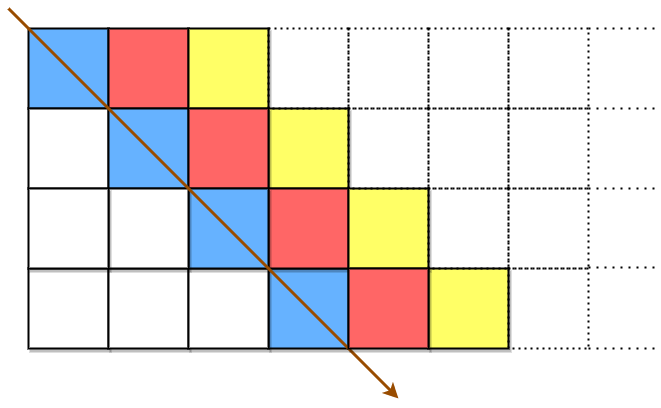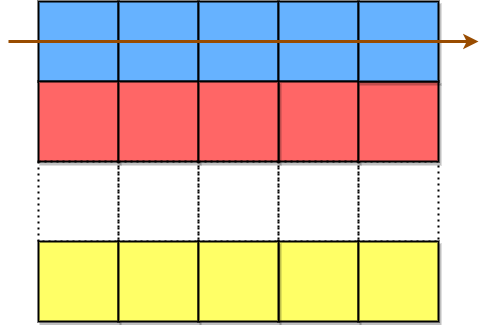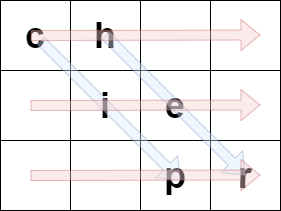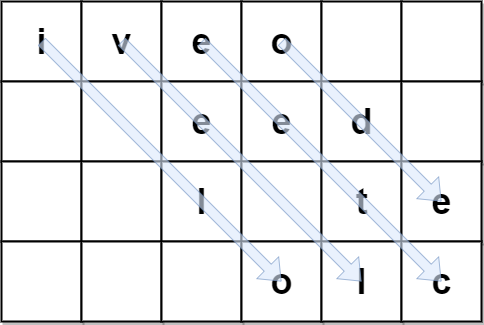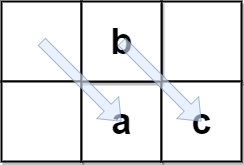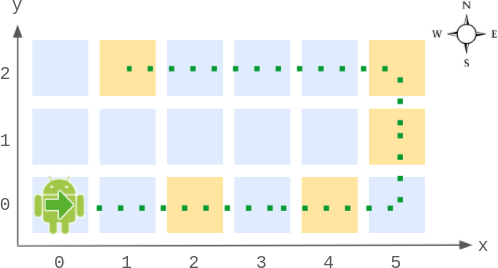You want to water n plants in your garden with a watering can. The plants are arranged in a row and are labeled from 0 to n - 1 from left to right where the ith plant is located at x = i. There is a river at x = -1 that you can refill your watering can at.
Each plant needs a specific amount of water. You will water the plants in the following way:
- Water the plants in order from left to right.
- After watering the current plant, if you do not have enough water to completely water the next plant, return to the river to fully refill the watering can.
- You cannot refill the watering can early.
You are initially at the river (i.e., x = -1). It takes one step to move one unit on the x-axis.
Given a 0-indexed integer array plants of n integers, where plants[i] is the amount of water the ith plant needs, and an integer capacity representing the watering can capacity, return the number of steps needed to water all the plants.
Example 1:
Input: plants = [2,2,3,3], capacity = 5 Output: 14 Explanation: Start at the river with a full watering can: - Walk to plant 0 (1 step) and water it. Watering can has 3 units of water. - Walk to plant 1 (1 step) and water it. Watering can has 1 unit of water. - Since you cannot completely water plant 2, walk back to the river to refill (2 steps). - Walk to plant 2 (3 steps) and water it. Watering can has 2 units of water. - Since you cannot completely water plant 3, walk back to the river to refill (3 steps). - Walk to plant 3 (4 steps) and water it. Steps needed = 1 + 1 + 2 + 3 + 3 + 4 = 14.
Example 2:
Input: plants = [1,1,1,4,2,3], capacity = 4 Output: 30 Explanation: Start at the river with a full watering can: - Water plants 0, 1, and 2 (3 steps). Return to river (3 steps). - Water plant 3 (4 steps). Return to river (4 steps). - Water plant 4 (5 steps). Return to river (5 steps). - Water plant 5 (6 steps). Steps needed = 3 + 3 + 4 + 4 + 5 + 5 + 6 = 30.
Example 3:
Input: plants = [7,7,7,7,7,7,7], capacity = 8 Output: 49 Explanation: You have to refill before watering each plant. Steps needed = 1 + 1 + 2 + 2 + 3 + 3 + 4 + 4 + 5 + 5 + 6 + 6 + 7 = 49.
Constraints:
n == plants.length1 <= n <= 10001 <= plants[i] <= 106max(plants[i]) <= capacity <= 109
Solution: Simulation
Time complexity: O(n)
Space complexity: O(1)
C++
|
1 2 3 4 5 6 7 8 9 10 11 12 13 14 |
// Author: Huahua class Solution { public: int wateringPlants(vector<int>& plants, int capacity) { const int n = plants.size(); int ans = 0; for (int i = 0, c = capacity; i < n; c -= plants[i++], ++ans) { if (c >= plants[i]) continue; ans += i * 2; c = capacity; } return ans; } }; |
